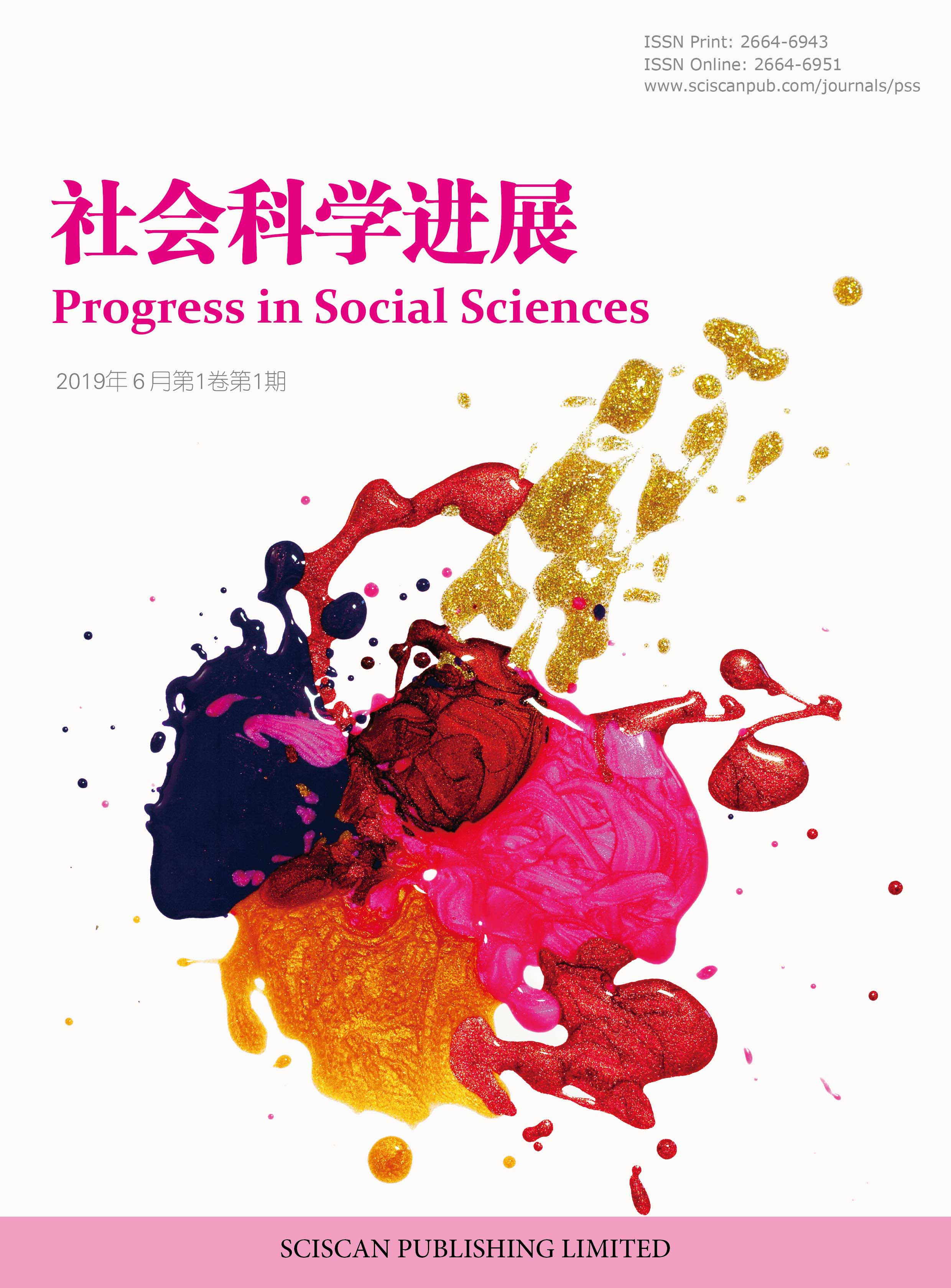Progress in Social Sciences
中译日机器翻译的常见错误与译后编辑策略研究
Research on Common Errors and Post Translation Editing Strategies in Chinese Japanese Machine Translation
- Authors: 冯晶晶 李文瑞 蒲娇 范亚亚 杨吟
-
Information:
华东理工大学,上海
-
Keywords:
Machine translation; Translation from Chinese to Japanese; Vocabulary level errors; Sentence level errors机器翻译; 中译日; 词汇层面错误; 句子层面错误
- Abstract: In recent years, the accuracy of machine translation has been continuously improving, but even with the emergence of artificial intelligence translation based on large language models, there are still some obvious mistranslations. To address these issues, it is necessary to first clarify the problems in machine translation. This study takes Chinese to Japanese translation as an example, selects news reports and novel texts as corpus, summarizes the common types of errors in Chinese to Japanese machine translation at the lexical and sentence levels, analyzes the reasons for errors compared to manual translation, and proposes some post translation editing strategies. 近年来,机器翻译的正确率不断提高,但即便基于大语言模型的人工智能翻译出现后,仍然存在一些明显的误译。为解决这些问题,首先必须明确机器翻译中的问题,本研究以中译日为例,选取新闻报道和小说文本为语料,归纳总结了中译日的机器翻译在词汇层面、句子层面常出现的错误类型,并对照人工翻译分析了错误原因,同时提出了一些译后编辑策略。
- DOI: https://doi.org/10.35534/pss.0604115
- Cite: 冯晶晶,李文瑞,蒲娇,等.中译日机器翻译的常见错误与译后编辑策略研究[J].社会科学进展,2024,6(4):1135-1142.
1 引言
随着机器翻译技术的提高、翻译软件的普及,机器翻译可以说已进入到了我们的日常生活中,广泛应用于学习、娱乐、旅游、商务等各种场景。而在ChatGPT等一系列AI大语言模型推出后,人工智能翻译似乎比之前的机器翻译又有了一定的提升,但我们不难发现其翻译仍存在一些局限,且这些局限大多在之前的机器翻译中就已出现。而且,由于人工智能翻译所生成的内容存在随机性,不利于收集数据,因而我们认为仍有必要以传统机器翻译为研究对象,明确其中的问题。目前关于机器翻译的研究主要集中于中英之间的翻译,关于中日之间的机器翻译研究还较少,因此本文以中译日为例,通过比较机器翻译与人工翻译,考察机器翻译在哪些表达中会出现明显的错误,机器翻译技术难以准确处理的问题人工翻译是如何处理的,导致机器翻译错误的原因是什么。本研究旨在明确中译日的机器翻译中存在的问题,为今后的人工智能翻译研究带来启示,同时也希望能帮助外语学习者、译者提升使用机器翻译的效率。
2 研究方法和语料来源
在生成式人工智能翻译出现之前,机器翻译的发展历经了基于规则的机器翻译、统计机器翻译和神经机器翻译。本文所指的机器翻译当属于神经机器翻译,在人工智能翻译出现之前此技术已能高效地完成不同语言间的翻译。关于机器翻译以及译后编辑的研究也主要产生于这一发展阶段,中日间的机器翻译研究较少,例如车彤(2021)针对新闻报道类文本,比较分析了三款机器翻译的中译日译文,指出机器翻译中常见错误包括数值、新词、简称、比喻、专有名词、时态、未翻译、译法不统一等;芦洪悦(2023)针对历史书籍类文本的日译中机器翻译,指出机器翻译存在文化负载词、中日同形词处理不当,受源与句子结构束缚、译文成分残缺、衔接不当、连贯不畅等问题。这些研究都是就某一类文本进行了分析,但如冯志伟(2018)中提到,机器翻译在文学作品的翻译方面仍然存在不少的问题,因此,本文将结合文学作品来探讨。限于论文篇幅,本文仅对中译日的机器翻译进行分析探讨。
本研究在预研究阶段首先对翻译软件和翻译文本进行了比较和选择。我们选用新闻报道、学术论文、散文、小说、网络文章等多种类型的文本对百度翻译、有道翻译、腾讯翻译君、彩云小译、谷歌翻译、DeepL等软件进行了测评,综合翻译结果以及日后进行人工智能翻译研究的因素考虑,我们在正式研究阶段,最终选择了百度翻译(http://fanyi.baidu.com)的结果作为本研究中的机器翻译版本与人工翻译进行参照比较。
翻译文本方面,我们在正式研究阶段选定了新闻报道和小说这两种类型,新闻的表达更为书面正式,小说中对话口语表达更多,但相通的是例如两者都存在大量人名、地名、新词、比喻、复杂长句等机器翻译难以识别的语义和语境,以两种不同语言风格和体裁类型的文本作为研究语料来源,可互为补充,使研究结果更有代表性。同时,为保证作为参照的人工翻译的准确性,本研究最终选用了具备中文原文和日语对照译文的“人民网日文版”网站(http://j.people.com.cn)的新闻报道文章和小说《人民的名义》的中日文版(周梅森著,岩切沙树译)。虽不可否认存在译者个体差异,但两者的翻译可以说都具有相当的可信度。
3 研究结果
如上所述,本研究随机选取了“人民网日文版”网站的25篇新闻报道,以及小说《人民的名义》第27~31章内容作为语料来源,中文原文合计约25 000字,人工翻译的日文译文合计约38 000字。利用百度翻译获得中译日的机器翻译结果后,再与人工翻译的日文译文逐一比较,整理归纳存在明显偏差之处。以下分别按词汇层面、句子层面对一些有代表性的问题进行分析探讨,并尝试提出一些针对性的译后编辑建议。所示例句的出处以“人民網”代表“人民網日本語版”,同时标注报道的发布日期,以“人民の名”代表“人民の名のもとに”,同时标注页码。
3.1 词汇层面
3.1.1 专有名词、简称
(1)沙瑞金换了个话题:易学习,你咋没跟李达康去干啊?李达康后来顺风顺水,做了省委常委,跟他干,进步不就快些了吗?
【人工翻译】易学習、どうして李達康についていかなかった?李達康はその後、順風満帆に省委員会常務委員になった。彼と一緒に仕事をしていればもっと早くに昇任できていただろう。 (人民の名p.346)
【机器翻译】沙瑞金は話題を変えた:勉強しやすいのに、どうして李達康とやらなかったの?李達康は後に順風満帆になり、省委員会常務委員になり、彼とやれば、進歩は早くなるのではないか。
(2)说吧,你们反贪局又瞄上谁了?
【人工翻译】話してみなさい。腐敗賄賂防止局は誰を狙っている? (人民の名p.324)
机器翻译:言って、あなたたちの反貪欲局はまた誰を狙ったのですか。
(3)仅官厅水库监测区,短短一天就迎来了1.5万只远道而来的候鸟。
【人工翻译】北京市延慶区と河北省の境界に位置する「官庁ダム」のモニタリングエリアだけでも、わずか1日の間に、1万5000羽の渡り鳥が飛来している。(人民網2023.11.13)
【机器翻译】官庁ダムの監視区域だけで、わずか1日で1万5000羽のはるばる渡り鳥を迎えた。
例(1)中的“易学习”是人名,机器翻译错译为“勉強しやすい”,未识别出人名。例(2)中“反贪局”是“反贪污贿赂总局”的简称,而机器翻译只是将“贪”译作了“貪欲”,其余保留了原汉字,没有翻出“反贪局”的实际意思。例(3)中,人工翻译不仅翻出了“官厅水库监测区”的意思,还为了便于读者理解,对其地理位置进行了补充说明,这样的翻译策略在人工翻译中颇为常见,但在机器翻译中不会看到。
我们发现机器翻译遇到专有名词、简称,经常存在保留汉字或脱离上下文直译或不便于读者理解的问题,因此我们在译后编辑时应注意结合上下文翻出该词在文中的实际意思,适当辅以注解。
3.1.2 新词、俗语
(1)他在家乡程海镇、三川镇的多个村子里画了20多幅不同主题的墙绘,给村庄增添了斑斓色彩,其创作墙绘的短视频也在网络上热传,吸引了不少游客前来“打卡”。
【人工翻译】劉志誠さんは、故郷である程海鎮や三川鎮にある複数の村で、テーマの異なる壁画20枚以上を描き、村に彩りを添えている。そして壁画を創作する様子を撮影したショート動画が、ネット上で大きな話題となり、多くの観光客が現地を訪れ、写真撮影を楽しんでいる。(人民網2022.6.28)
【机器翻译】彼は故郷の程海鎮、三川鎮の複数の村で20枚以上の異なるテーマの壁絵を描き、村に彩りを添えた。その壁絵を創作した短い動画もネット上で話題になり、多くの観光客が「カードを打つ」ために訪れた。
(2)顶流“花花”,带火了熊猫,也带火了“熊猫之城”——成都。
【人工翻译】トップスター「花花」がパンダ人気に火を付け、「パンダの都市」成都の人気にも火を付けた。(人民網2023.3.15)
【机器翻译】頂流の「花」は、パンダに火をつけ、「パンダの城」である成都にも火をつけた。
(3)最近,云南昭通小肉串火爆“出圈”,成为不少夜市、美食街上的C位主角。
【人工翻译】雲南省昭通市の肉の串焼きが最近、人気を集め、全国規模で知名度が上がり、ナイトマーケットやグルメストリートの主役となっている。(人民網2024.5.16)
【机器翻译】最近、雲南省昭通の小さな肉串が「出圏」し、多くの夜市や美食街のC人の主役となっている。
(4)但是今天见鬼了,他换上射击服,戴上隔音耳机,心却一点也静不下来。
【人工翻译】しかし、今日は不思議なことに、射撃服に着替え、イヤーマフをつけてもまだ落ち着かなかった。(人民の名p.351)
【机器翻译】しかし、今日は幽霊が出た。彼は射撃服に着替え、防音イヤホンをつけたが、心は少しも落ち着かなかった。
例(1)中“打卡”是个近年被赋予新义的词,由“考勤打卡”引申为“到某个地方(尤指网红圣地)”,但机器翻译只是直译了原来字面的意思。例(2)中的“顶流”是网络流行语,用于形容极出名的人或事物、内容,人工翻译将其译为「トップスター」符合句中的意思,机器翻译未作翻译。例(3)的“出圈”也是网络流行语,指某位偶像或明星知名度变高,不止被粉丝小圈子所关注,还开始进入大众视野,机器翻译同样未翻译。例(4)中“见鬼了”是句俗语,形容事情离奇、不寻常,机器翻译直译成了“出现了幽灵”,不符合原句的意思。
针对这类词,我们在译后编辑时要注意避免直译,而是应当译成符合当下时代或者符合语境的词义。
3.1.3 成语、比喻
(1)陈清泉真出了事,恐怕又要横生枝节。
【人工翻译】陳清泉に問題があれば、何かまた問題が起きるかもしれない。 (人民の名p.315)
【机器翻译】陳清泉は本当に事故を起こした、恐らくまた枝葉末節が生えてくるだろう。
(2)祁同伟很清楚,老师高育良是他的政治资源,而他过世的岳父梁群峰又是老师的政治资源。师生之情加上裙带关系,为他既往的进步构筑了扎实的基础。
【人工翻译】高育良先生は祁同偉の政治資源だ。なくなった義父の梁群峰は先生の政治資源だ。先生と生徒の関係に加え、閨閥関係にあり、祁同偉のこれまでの確かな礎を築いてくれた。(人民の名p.350)
【机器翻译】祁同偉はよく知っているが、先生の高育良は彼の政治資源であり、彼が亡くなった義父の梁群峰はまた先生の政治資源である。教師と学生の気持ちにスカートの関係を加えて、彼の既往の進歩のためにしっかりとした基礎を構築した。
(3)书记同志义正词严,满嘴官腔,对他和纪委发布了具体指示:突查干部顶风违纪!
【人工翻译】書記は道理を踏まえた上で容赦ない役人口調で、彼と規律検査委員会に具体的な指示を出した。「公然と規律違反する幹部を抜き打ちで調査しろ!……」(人民の名p.316)
【机器翻译】書記同志は義正語厳で、役人口調で、彼と規律検査委員会に対して具体的な指示を出した:幹部の風向きに逆らって規律違反を調査する!
例(1)中的成语“横生枝节”机器翻译未识别,而是直译成了“生出枝叶末节”,人工翻译是作为成语来翻译的。例(2)中“裙带关系”是指利用姻亲关系相互勾结,但机器翻译错译成了“裙子的关系”。例(3)中“顶风”是比喻不顾对自己不利的形势,公然作出某行为,但机器翻译是按其另一个意思“迎着风、逆风”翻译的。
我们发现机器翻译常常不能识别成语、有比喻义的词,它会错误切分词导致误译或是只按字面直译,因此在译后编辑时,要注意将成语或有比喻义的词按照上下文语境译出其比喻义。
3.2 句子层面
3.2.1 时态、语气
(1)沙瑞金一声叹息:我听明白了,难怪他老婆要和他离婚呢!
【人工翻译】「なるほど、道理で奥さんは離婚したわけだ」沙瑞金はため息をついた。(人民の名p.347)
【机器翻译】沙瑞金はため息をついた:私は理解して、道理で彼の妻は彼と離婚します!
(2)王大路还让我一家住呢,我没答应。
【人工翻译】王大路は私たち一家に住まわせようとしましたが、断りました。(人民の名p.346)
【机器翻译】王大路は私の家族を泊めてくれたが。私は承知しなかった。
(3)书记同志义正词严,满嘴官腔,对他和纪委发布了具体指示:突查干部顶风违纪!
【人工翻译】書記は道理を踏まえた上で容赦ない役人口調で、彼と規律検査委員会に具体的な指示を出した。「公然と規律違反する幹部を抜き打ちで調査しろ!……」(人民の名p.316)
【机器翻译】書記同志は義正語厳で、役人口調で、彼と規律検査委員会に対して具体的な指示を出した:幹部の風向きに逆らって規律違反を調査する!
(4)这么一大堆烂事,难啊!吴老师,你现在知道我昨夜为啥在阳台上站半宿了吧?
【人工翻译】こんなにたくさん腐敗しているやつがいるなんて、本当に災難だ!呉先生、俺が昨夜ベランダで夜更かししていた理由が今ならわかるだろ?(人民の名p.338)
【机器翻译】こんなめちゃくちゃなこと、難しい!呉先生、私が昨夜どうしてベランダに半泊したのか知っていますか。
例(1)中“难怪他老婆要和他离婚呢”的意思是沙瑞金明白了欧阳菁要和李达康离婚的原因,这里的离婚是过去已经发生的事情,而机器翻译却错误地将“要”理解成了“将要”,用了将来时态。例(2)从后半句的“我没答应”可以看出来,“让我一家住”实际并未住,所以人工翻译中用了“住まわせようとしました”,即王大路的意愿是想让我们住,但机器翻译却错误地译成了“泊めてくれた”,是“让我们住(且实际住了)”的意思,与原文意思不符。例(3)从前句看出李达康是命令的语气,所以人工翻译用了命令形“しろ”,而机器翻译则未体现出这一语气。例(4)中的“知道……了吧”机器翻译翻成了疑问语气,实际是一种希望对方同意的确认语气,用“だろ(う)”更符合上下文语境。
时态、语气方面中文与日文有很大的差异,同一个形式在不同的上下文中可能表示不同的时态、语气,而机器翻译往往比较机械地将一个形式对应一个时态,不能精确地翻出语气,因此我们在译后编辑时,尤其需要对时态、语气仔细斟酌,确认原文的上下句。
3.2.2 授受表达
(1)双方结婚至今,二十五年了,李达康都没为她过过一次生日。
【人工翻译】結婚してから25年。李達康は一度も誕生日を祝ってくれたことはなかった。(人民の名pp.360-361)
【机器翻译】双方は結婚してから25年になるが、李達康は彼女のために一度も誕生日を祝ったことがない。
(2)祁同伟走了,把一阵阵钻心的疼痛也带走了,牙不那么疼了。
【人工翻译】祁同偉が一緒に痛みも連れ去ってくれたのか、歯の痛みが落ち着いた。(人民の名p.335)
【机器翻译】祁同偉は行って、ひとしきり心を潜めていた痛みも持って行って、歯はそんなに痛くなくなった。
例(1)中人工翻译用授受表达“祝ってくれた”非常简洁了表示了李达康为欧阳菁过生日这一动作关系,而机器翻译是按中文直译的,所以分别用了“彼女のために”和“祝った”,却远不如授受表达简洁明了,也不够自然。例(2)中“把一阵阵钻心的疼痛也带走了”用了修辞手法,意思是指高育良觉得祁同伟离开后,原先发作的牙疼不那么疼了,人工翻译巧妙地用授受表达“連れ去ってくれた”,同时表达了两者间的动作关系以及高育良为牙疼减轻了感到欣慰的这种心情,而机器翻译只是按原文的顺序直译,不但未能体现这一人物关系,而且意思相当不明确。
日语中非常常用授受表达,它可以同时表示人物关系、动作方向、恩惠关系,可以说是日语特有的一种句型表达,但我们发现机器翻译中很少出现。这就需要我们在译后编辑中适当添加运用,让译文更简洁明了,也更符合日语的表达习惯。
3.2.3 复句关系
(1)北京地处全球八大候鸟迁徙通道之上,每年春秋两季,都有数百万只候鸟浩浩荡荡而来,吃饱喝足、略作休整,体力充足之后,继续它们的长途旅行。
【人工翻译】北京は、世界渡り鳥の飛来経路トップ8に名を連ねており、毎年の春と秋になると、数百万羽の渡り鳥が一斉に飛来してくる。そしてお腹を満たし、喉を潤し、しばし休んで体力を回復させてから、また長い旅へと飛び立つ。(人民網2023.11.13)
【机器翻译】北京は世界8大渡り鳥の移動通路の上にあり、毎年春と秋の2シーズン、数百万羽の渡り鳥が堂々とやってきて、満腹になって、少し休養して、体力が十分になった後、長距離旅行を続けます。
(2)他做县长,县长就是一把手,他做书记,书记就是一把手。
【人工翻译】県長になれば県長が、書記になれば書記が力を持っていた。(人民の名p.343)
【机器翻译】彼は県長をして、県長はトップで、彼は書記をして、書記はトップです。
(3)感谢这个时代,让我这样的小人物也有大舞台,得以施展才华,为社会创造美。
【人工翻译】今の時代に感謝している。私のような人間にも大きな舞台が与えられ、その才能を活かして、社会のために美しさを創造することができるのだから。(人民網2022.6.28)
【机器翻译】この時代に感謝して、私のような小さな人物にも大きな舞台があり、才能を発揮し、社会のために美を創造することができました。
例(1)用接续助词“~と”来表示规律性的条件,即每到春秋季候鸟就会飞来这一现象,前后文的条件关系非常明确,而机器翻译没有翻出前后句的这层关联。例(2)前后用了两个接续助词“~ば”来表示假设性的条件,相当于把原文中省略的关联词补全了,即“如果他做县长的话……,如果他做书记的话……”,但机器翻译只翻出了并列的意思,不符原意。例(3)的人工翻译将长句拆成了两个分句,在第二句的最后用“~だから”表示理由,将前后句的因果关系明确地表达了出来,但机器翻译按原文顺序直译,并没有梳理清分句间的逻辑关系。
中文中往往省略关联词,这就会导致机器翻译的错误,译后编辑时,我们必须理解上下文的逻辑关系后补全关联词,仔细分析原文中暗含的逻辑,通过添加接续助词、调整语序等方式让句意更明确。
3.2.4 复杂修饰成分
(1)其中一张照片是陈清泉怀里搂着一个外国洋女人喝交杯酒。
【人工翻译】一枚は陳清泉が外国人女性を抱き、酒を飲んでいるもの。(人民の名p.325)
【机器翻译】そのうちの1枚は陳清泉の懐に外国人の洋人女性を抱いてグラス酒を飲んでいる。
(2)你这次来反贪,是不是也会像我当年抓毒贩一样,一个不饶恕。
【人工翻译】あの時俺が麻薬取締を行った時と同じように、今回の腐敗事件を大目に見ようとは思っていないんだろ。(人民の名p.355)
【机器翻译】あなたは今回反貪欲に来て、私が麻薬密売人を捕まえたように、一人も許さないのではないでしょうか。
(3)他一下子从老所长身上看到了自己的未来,这也许就是三十年后的他啊——孤独,寂寞,艰难而又毫无盼头的生活,他必须逃亡!(他指的是祁同伟)
【人工翻译】祁同偉はすぐに年老いた所長を通して自分の未来を見た。もしかしたら、三十年後の自分にはこのような孤独で、寂しく、困難な、希望もない生活が待っていると思うと、逃げ出さなければならないと思った。(人民の名p.352)
【机器翻译】彼は一気に古い所長から自分の未来を見た。これは30年後の彼かもしれない――孤独、寂しさ、困難で何の望みもない生活、彼は逃亡しなければならない!
例(1)中“是陈清泉怀里搂着一个外国洋女人喝交杯酒”的部分都是对句中的主题“其中一张照片”的描述,而不是一个单独的动作,人工翻译用了“一枚は~もの(だ)”的句式,同样表示了对照片的描述,符合原意,但机器翻译的后半句却译成了动作,导致句子在语法上不成立。例(2)的人工翻译调整了语序,将“像我当年抓毒贩一样”提到了前面作为一个从句,将剩余的两个分句整合作为一个主句,表达更清晰,更符合日语习惯,机器翻译和原句顺序一致,但意思反而不明确。例(3)的原文用了一个破折号来补充说明三十年后的样子,机器翻译按原句顺序翻译了,但实际日语这样的情况不会用破折号,人工翻译通过意译整合了破折号前后的句子,并加上了“~と思うと”与后文衔接,表示了前后文之间的顺接条件关系,意思非常清晰明了。
包含复杂修饰成分的长句无疑是翻译中的难点,我们发现机器翻译也同样不擅长长句,我们在译后编辑时,要注意首先理清中文原文中各成分间的修饰关系,划分好层次,然后再根据日语的表达习惯,打破句子原有顺序适当进行调整、整合,提高译文的准确性。
4 总结
本研究通过分析新闻报道和小说的中译日机器翻译文本,举例说明了专有名词、简称、新词、俗语、成语、比喻、时态、授受表达、复句关系、复杂修饰成分等常见错误类型,结合与人工翻译的比较分析了导致错误的原因,最后针对每一种错误类型,给出了相应的译后编辑策略。我们在使用机器翻译时,应当尤其注意这些问题点,结合上下文语境,结合中文和日文的表达习惯,灵活地进行翻译。
然而,本研究归纳的问题尚不够全面,而且仅分析了中译日的情况,对日译中未能探讨,同时,也未能从语言学、语言教学等角度进行深入分析,不足之处留作今后课题。
参考文献
[1]冯志伟.机器翻译与人工智能的平行发展[J].外国语,2018,41(6):35-48.
[2]车彤.汉译日机器翻译质量评估及译后编辑策略研究[D].北京外国语大学,2021.
[3]芦洪悦.《伪满洲国中央观象台史》翻译实践报告——机器翻译错误类型及译后编辑策略分析[D].大连外国语大学,2023.
[4]周梅森.人民的名义[M].北京十月文艺出版社,2017.
[5]周梅森.人民の名のもとに(下巻)[M].岩切沙樹,訳.東京:グローバル科学文化出版,2018.
[6]北京の官庁ダムに1日1.5万羽の渡り鳥が飛来[EB/OL].人民網日本語版,(2023-11-13)[2024-08-20].http://j.people.com.cn/n3/2023/1113/c95961-20096161.html.
[7]村に彩り与える壁画師「劉小備」さん[EB/OL].人民網日本語版,(2022-06-28)[2024-08-20]. http://j.people.com.cn/n3/2022/0628/c95961-10115682.html.
[8]大人気パンダ「花花」が四川・成都の経済を牽引1人当たり消費額2.1万円[EB/OL].人民網日本語版,(2023-03-15) [2024-08-20].http://j.people.com.cn/n3/2023/0315/c94476-10222808.html.
[9]肉の串焼きが100億元規模の産業に!人気集める雲南省昭通市の肉の串焼き[EB/OL].人民網日本語版,(2024-05-16)[2024-08-20].http://j.people.com.cn/n3/2024/0516/c95961-20170215.html.
















